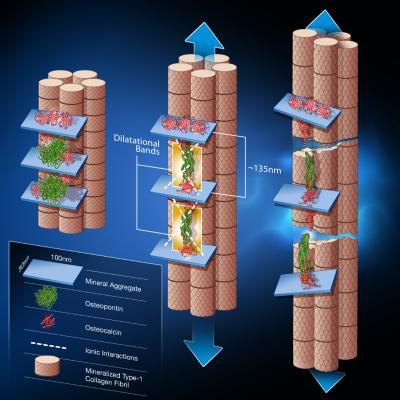Just another reason to eat your veggies!
“Currently, all of the advice for treating osteoporosis is related to calcium … the results of this new study raise an important question about vitamin K. Leafy green vegetables are the best source of vitamin K—wouldn’t it be great if eating spinach and broccoli was not only healthy, but also good for your bones?” says the author of a new multi-university study, Deepak Vashishth.
Vashishth heads an engineering study that is the first to give evidence of fracture at the level of bone’s nanostructure. This study shows how the little-understood protein osteocalcin plays a significant role in the strength of our bones.
Fractures in healthy bones begin with the creation of incredibly tiny holes, each measuring only about 500 atoms in diameter, within the bone’s mineral structure. These tiny holes function as a natural defense mechanism in the case of a slip, trip, or fall, as the force of the impact physically deforms a pair of joined proteins, osteopontin and osteocalcin. But if the force of the impact is too great—or if the bone is lacking osteopontin, osteocalcin, or both—the bone will crack and fracture.
Long known but little understood, the protein osteocalin must be in its carboxylated form to get absorbed into bone, and the protein is carboxylated by vitamin K. “This study is important because it implicates, for the first time, the role of osteocalcin in giving bone the ability to resist fracture,” Vashishth says. “Since osteocalcin is always the point of fracture, we believe that strengthening it could lead to a strengthening of the overall bone.”
Just another reason we need to eat as many veggies as possible for happiness!
Image: A healthy bone is seen on the left. Impact on a bone physically deforms a pair of joined proteins, osteopontin and osteocalcin, and results in the formation of nanoscale holes within the bone’s mineral structure, as seen in the middle. If the force of the impact is too great–or if the bone is lacking osteopontin, osteocalcin, or both–the bone will crack and fracture, as seen on the right. Credit: Rensselaer/Vashishth

